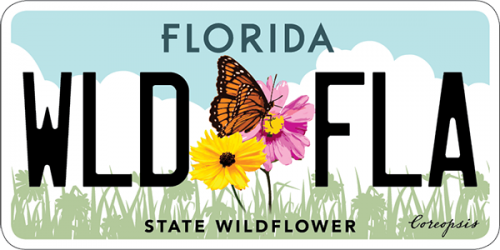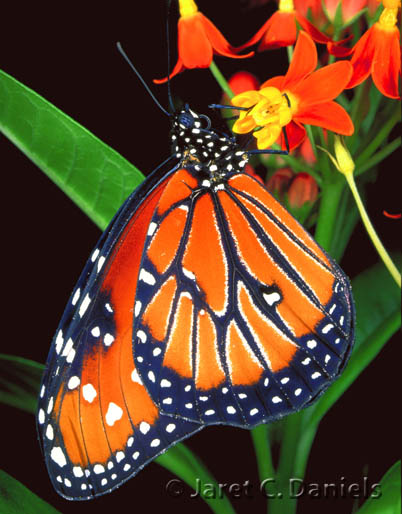- Family name: Nymphalidae/Brush-Footed Butterflies
- General description: Wings above rich mahogany with black borders enclosing small white spots, lack black veins. Forewing with numerous small, white spots near apex. Male hindwing with small black scent patch along inner margin; female lacks black patch. Ventral hindwing rich mahogany with black outlined veins and black border enclosing small white spots.
- Field Marks: Wings rich mahogany with black borders, wings above lack black outlined veins.
- Sexes: appear similar
- Wingspan: 80-96 mm
- Life Cycle: Egg: Cream, laid singly on host leaves or flowers Mature larva: black with yellow and white transverse bands, two yellow dorsal spoys in each wide black band, and three pairs of long fleshy filaments. Chrysalis: Green or occasionally pink with a black and gold dorsal band on the abdomen
- Number of Generations: Three or more
- Flight Season: All year
- Abundance: occasional to common
- Habitat: Fields, marshes, moist meadows, prairies, pinelands, roadsides, parks, coastal areas, pastures, gardens
- Larval Host Plants: Various milkweed including White Swamp Milkweed (Asclepias perennis), Pineland Milkweed (Asclepias humistrata), rarely Butterflyweed (Asclepias tuberosa)
- Similar Species: Monarch, Viceroy
- Additional Information: Range is limited in Colorado. Larvae feed on milkweed family plants and sequester toxic chemicals that render them and the resulting adults distasteful to certain predators. The bold black and mahogany coloration advertises this unpalatability. Locally common throughout the year in central and south Florida, annually colonizes northern portions of the state where abundance often varies considerably from year to year.
- Range in Florida
 The Florida Wildflowers & Butterflies projects at the Florida Museum are sponsored in part by the State of Florida and the Florida Wildflower Foundation, Inc.
The Florida Wildflowers & Butterflies projects at the Florida Museum are sponsored in part by the State of Florida and the Florida Wildflower Foundation, Inc.
